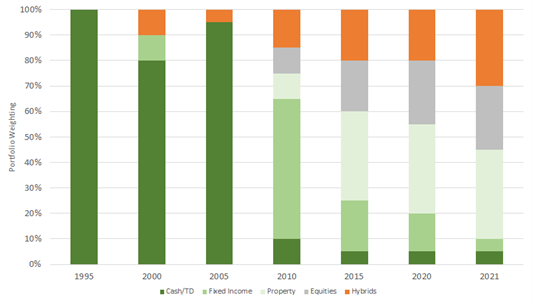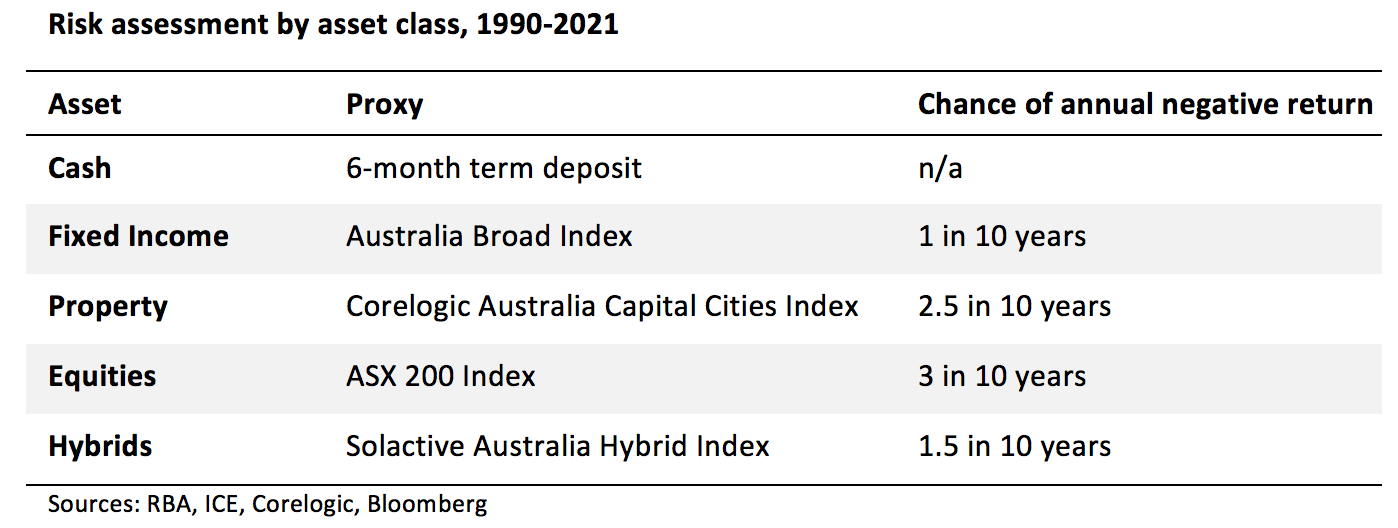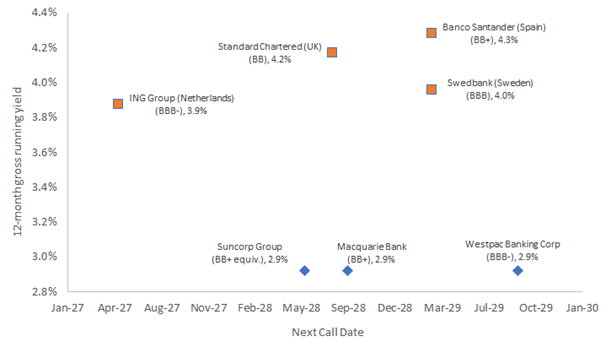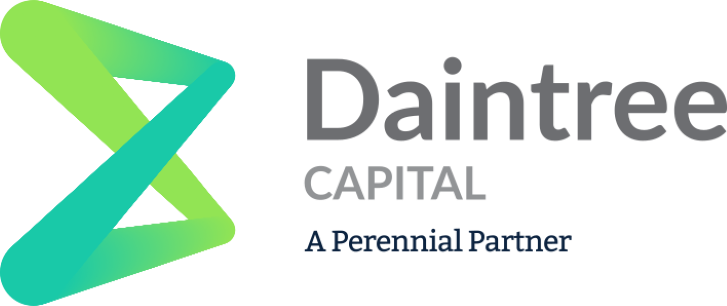Active, global approach unlocks full potential of hybrids

Daintree Capital
Against a backdrop of record-high equity markets and low-interest rates, investing for income while seeking to preserve capital is an increasingly common goal among those who require their savings and investments to provide reliable, tax-effective cash flow.
Hybrids are a unique
amalgamation of debt and equity, present a popular option and consistently
address both the income and capital stability goals of the conservative
investor
But to maximise the benefits of these unique securities you need a global perspective and an active mindset. You also need to know that the ideal portfolio has changed dramatically over time.
There's a caveat: while hybrids have aspects of debt and equity, these characteristics can assert themselves when you least want them to.
In this wire, I spell out the advantages of taking a global approach to investing in hybrids and how history proves that proper consideration of risk rewards the prepared investor.
Look beyond our borders
At Daintree Capital, we do not manage to any index. This ensures we have ample flexibility to respond to market changes.
We use cost-effective hedging strategies that aim to buffer against major dislocations.
By staying local, Australian hybrid investors have access to only 4% or so of the global market, leaving a vast universe of untapped opportunity.
Indeed, dozens of banks that compare favourably to the Australian majors also issue hybrid securities. Recent issuance in global markets highlights the advantage of broadening your horizons.
5%? Tell him he's dreaming
As a young financial planner in 2005, I recall discussing asset allocation with my clients and showing a humble 3-month term deposit yielding more than 5% per annum as a baseline defensive option. Those days are not returning any time soon.
Most investors spend much more time assessing, calculating, comparing and pursuing returns than they do considering the other side of the coin – the risks taken to achieve that return.
Today's market conditions implore investors, particularly the conservative variety, to consider the inevitable trade-offs they are making as they seek to maintain certain levels of income.
To demonstrate this, we looked back 30 years and estimated the least-risk portfolio required to achieve at least a 5% per annum income return at five-year intervals.
The chart below shows how hybrids have added value in most time periods.
Figure 1: Optimal portfolios to achieve a 5% return over time

Source: Bloomberg, Corelogic, Daintree
The change in the optimal portfolio has been dramatic as the relentless fall in interest rates has become the primary consideration.
This theme has certainly weighed on income returns from hybrids but they continue to hold a place in optimal portfolios because the income returns are high relative to the risk taken to earn that income. The table below shows the chances of negative returns in various asset classes.

The bottom line is: the world is not returning to a situation where fixed income alone can satisfy the income needs of most investors.
Difficult decisions must be made regarding asset allocation. Investors require as diverse a menu of options as possible to consider all viable permutations.
How tracking the index falls short
My team and I have been voicing our concerns about index investing in fixed income for some time.
Indices in this category suffer two massive shortcomings.
First, they are almost exclusively populated with fixed-rate bonds, exposing investors to duration risk. (Duration risk relates to the sensitivity of a bond’s price to changes in interest rates.)
Second, indices are constructed on a debt-weighted basis, meaning those borrowers with the highest liabilities are most highly represented.
Then there is the issue of opportunity cost. By following a benchmark, even a broad one, you are limited to issuers that meet the index criteria.
The benefits available to active managers quickly accumulate in a large discoverable universe such as hybrids.
Similarly, being independent of the index makes it possible to reduce a holding to zero if circumstances change. This helps to avoid a costly default, the worst-case outcome for any fixed-income investor.
Looking past the index is especially important in hybrids, where market movements can be swift and decisions may need to be made quickly.
Another benefit to active management is the ability to identify and manage key risks. Investors in hybrids have to address the risks of a sharp drawdown, extension and missed distributions.
The risks of extension and missed distributions can be managed with fundamental research and proven portfolio-construction techniques, such as meaningful diversification.
As for sharp drawdowns, these often occur quickly and unexpectedly. Australian hybrids have logged a negative 12-month return on just three occasions in the last 21 years but correlations to equities can vary significantly, depending on the mood of the market (Source: Bloomberg and Daintree).
Daintree funds include a tailored hedging strategy that seeks to mitigate the impact of such a scenario, consistent with our focus on capital preservation and achieving positive returns in most market environments.
There's value offshore
With a local market size approaching $45 billion, hybrids have solid appeal with retail investors and self-managed super funds (Source: ASX). Well-known issuers and the availability of franking credits help to drive this demand.
The total market value of hybrids in Australia plateaued around 2018, leaving a growing demand base to compete for a largely static supply.
Thus, adding an offshore dimension to your hybrid portfolio can reveal a vast new menu of ideas. It is not just the diversity of issuers that can be gained by looking offshore – the returns often comparing favourably to similar Australian issuers.
An analysis of recent deals emphasises the point. In the chart below we compare three recent Australian offers to four recent international offers.
Figure
2: Comparison of recent hybrid offers

Source: Bloomberg, Daintree estimates
Two important observations can be made. The first, most obvious, is that offshore hybrids offer 12-month running yields that are 100-140 basis points higher than the most recent Australian offerings.
The second is that the three Australian offerings all priced with the same spread over bank bills (290 basis points), regardless of their credit rating or duration to the first call date.
When there is such strong demand for a relatively static supply of new securities, issuers can reduce the compensation on offer.
Daintree did not participate in any of the Australian offers in the chart but we hold all four of the international securities.
The rule book's on fire
Long-time investors in hybrids have been on quite the journey.
When I first began to analyse hybrid securities in 2011, I could never have imagined that within 10 years the bank-bill swap rate would fall effectively to zero while spread margins settled below 300 basis points across the curve.
Identifying reliable and sustainable income investment opportunities will remain challenging for the foreseeable future. Investors are being forced to choose between:
- Protecting capital in exchange for lower income;
- Drawing down capital over time to maintain a certain living standard; or
- Taking additional risk in search of higher yields.
These are difficult decisions but they can be made easier by having access to as many options as possible.
Our work suggests that having full access to the hybrid asset class can help in finding an acceptable balance between return requirements and the risks taken to achieve them.
Broadening your investment horizon for hybrids can help to achieve true diversification and by taking an active approach, you can address some of the unique characteristics and challenges of this asset class.
Given our expectation that the Australian hybrid market will remain supply-constrained, Daintree’s global and active approach could be just what is needed to unlock the true potential of hybrids in your portfolio.

Unlock the full potential of hybrids with DHOF
The Daintree Hybrid Opportunities Fund (Managed Fund) invests in a diversified portfolio of carefully selected Australian and global hybrid securities to provide a steady stream of income. Find out more.
5 topics
1 stock mentioned
1 fund mentioned

Brad Dunn commenced with Daintree in May 2017 as a Senior Credit Analyst. Prior to Daintree, Brad was with Ord Minnett for over 10 years. Brad’s most recent role at Ord Minnett was as Senior Analyst and Portfolio Manager in the Fixed Income team.
Expertise

Brad Dunn commenced with Daintree in May 2017 as a Senior Credit Analyst. Prior to Daintree, Brad was with Ord Minnett for over 10 years. Brad’s most recent role at Ord Minnett was as Senior Analyst and Portfolio Manager in the Fixed Income team.

